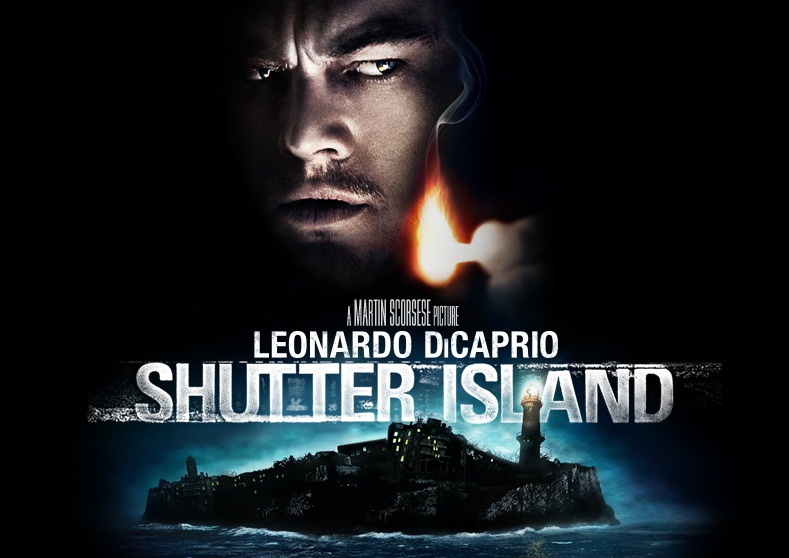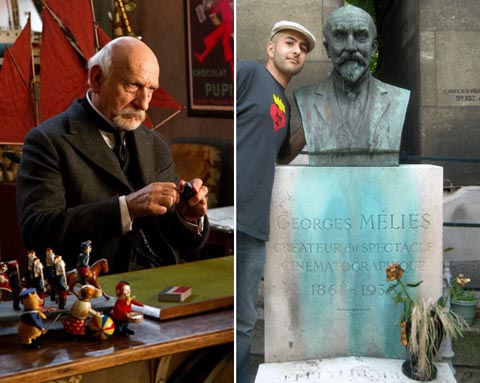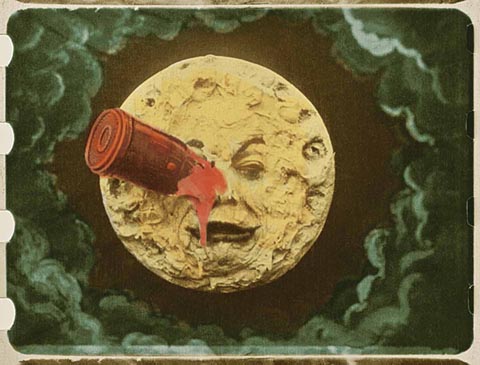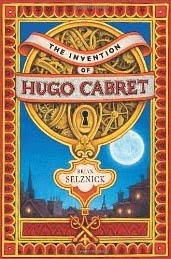I'm delighted to say I was featured on 7 Impossible Things, a terrific Children's Book Blog written by editor/author Julie Danielson. In addition, I just updated my website.
Viewing: Blog Posts Tagged with: Hugo, Most Recent at Top [Help]
Results 1 - 11 of 11
Blog: Angela N. Dominguez (Login to Add to MyJacketFlap)
JacketFlap tags: Hugo, Urban Sketcher, Add a tag
Blog: Emmasaries (Login to Add to MyJacketFlap)
JacketFlap tags: Harry Potter, Blog, childrens books, Jane Eyre, Brian Selznick, Oscar, Hugo, adaptations, War Horse, Puss in Boots, childrens lit, Tin Tin, Morris Lessmore, Add a tag
 Say what you will about the ceremony itself (I actually found it to be refreshingly tender and dignified, for the most part), Sunday night’s Academy Awards were a tribute to Oscar’s own medium – the history, customs, elders, and influence of cinema. From the retro popcorn girls in the aisles and the live band in the balcony, to the themes of the films and the longevity of the careers that were saluted, Oscar celebrated his own crib and the significant contribution the film industry has made to our lives.
Say what you will about the ceremony itself (I actually found it to be refreshingly tender and dignified, for the most part), Sunday night’s Academy Awards were a tribute to Oscar’s own medium – the history, customs, elders, and influence of cinema. From the retro popcorn girls in the aisles and the live band in the balcony, to the themes of the films and the longevity of the careers that were saluted, Oscar celebrated his own crib and the significant contribution the film industry has made to our lives.
For many of us, though, there was another medium honored throughout a surprisingly large portion of the evening – children’s books. Back in January, Publishers Weekly noted that 21 of the nominations were ‘nods for films based on kids books,’ specifically Hugo (11 nominations), War Horse (6), Harry Potter & the Deathly Hallows (3), and Tin Tin (1).
I would argue the number to be 24, if you count Puss in Boots, Jane Eyre (now widely considered to be a YA novel) and The Fantastic Flying Books of Mr. Morris Lessmore, a children’s book app as well as a short film, that in and of itself celebrates books and reading.
This is great news for children’s book authors of all stripes (though it would have been nice – and politic – to hear Brian Selznick’s name mentioned at least once over the course of the evening’s 5 awards given to Hugo.) It demonstrates the enduring appeal of stories for and about young people, from classic fairy tales, novels and comics to the richness of today’s middle grade and YA fiction and the exciting possibilities that new media represents for the entire genre.
But for me there was a subtler connection at play between the mediums of film and childrens literature on Sunday night. The films on offer this year were notably less snarky, trendy or cynical than those of recent years. Those familiar Hollywood qualities were largely replaced by conscience, compassion and – dare I say it – hope. What’s going on? Even in the darkest realms of YA, these are the universal themes of childrens lit!
Whatever it is, I like it. Let’s hope it sticks around awhile… or at least for as long as some of Sunday night’s honorees have.
Blog: OUPblog (Login to Add to MyJacketFlap)
JacketFlap tags: Avatar, Martin Scorsese, time, 3D, loneliness, Hugo, Alfred Hitchcock, james cameron, casino, Editor's Picks, *Featured, filmmaker, Dial M For Murder, TV & Film, Arts & Leisure, A Trip to the Moon, Cinema of Loneliness, Gangs of New York, Georges Méliès, history of film, Robert Kolker, Samuel Fuller, Shock Corridor, Shutter Island, The Aviator, The Departed, kolker, scorsese’s, scorsese, cameron’s, hugomovie, Add a tag
By Robert Kolker
“That’s that,” quoting Ace Rothstein at the end of Casino. I didn’t end the Martin Scorsese chapter on an optimistic note in the fourth edition of A Cinema of Loneliness. There is more than a hint that the Scorsese’s creative energies might be flagging.
My pessimism grew from the direction — or lack of direction — Scorsese’s films had taken over the past decade. I thought that the big productions of the 2000s — Gangs of New York, The Aviator, and The Departed — indicated some kind of flailing about for ideas. These films were not as lean and mean as the earlier gangster movies that worked at the speed of light and were deliriously comic in their basic brutality.

Copyright Paramount Pictures. Source: shutterisland.com.
Shutter Island seemed to seal the decline. An unofficial remake of Samuel Fuller’s 1963 Shock Corridor, the film could have been made, I thought, by anyone. It bore none of the hallmarks of Scorsese’s style and all of the hallmarks of an overwrought Hollywood gothic tale.
An obvious riposte to my pessimism is that I am not in a position to question an artist’s evolution. Scorsese no more than any other filmmaker is bound to repeat himself, and the great gangster and street films of his early period are a thing of the past. Artists change with time, and the results of that change may not be to everyone’s taste. At least not to mine.
With this in mind, I went to see Hugo with a lot of skepticism. Why would Scorsese make a film in 3D? The only reason I could come up with — aside from the fact that he might just wish to experiment with the old/new screen technology of the moment — is that Alfred Hitchcock made a 3D film when that format was first introduced in the 1950s: Dial M For Murder. Scorsese almost always roots his work in films of the past. His imagination is constructed of film. He is an amateur archivist, with a huge collection of movies that he watches continually. He has his cast and crew look at old movies when they are preparing a new one. His films become something of archival works themselves, full of allusions to their predecessors. But there is more to it than this.
I have resisted the recent 3D craze. I did go to see Avatar out of curiosity. James Cameron does not often repay curiosity. But something stood out in that film. The mise-en-scène of Cameron’s mythical world, with its floating vegetation in a liquid like atmosphere, reminded me of the underwater sequences of Georges Méliès’s A Trip to the Moon (Le voyage dans la lune, 1902). This magical film — Méliès was a magician as well as a filmmaker — was just one entry into his enormous filmography of fantasy filmmaking, his counter to the
Blog: ALSC Blog (Login to Add to MyJacketFlap)
JacketFlap tags: Books, movies, oscars, Children's Literature (all forms), Evaluation of Media, hugo, Blogger Angela Reynolds, Add a tag
Not often do I wholeheartedly approve of a book-to-movie production, but upon seeing HUGO, the movie adaptation of Brian Selznick’s The Invention of Hugo Cabret, I felt like shouting “Bravo!”  I have to drive at least 30 minutes to get to a movie theatre, so I must admit that I don’t get out much to experience the silver screen. Most often, what I do see is based on books I’ve read. The last few movies I took the trouble to go see were Harry Potter or Twilight films. I just wait for the DVD (sitting at home on my couch with a stack of good books, this is easy to do). But when I saw the previews for Hugo, I knew I had to make the effort to go see this film – because when I first read the book, I thought, “Wonder who is going to make this movie?” Some books you just know are destined for the big screen – they are that good. Some books feel like they were written in hopes of finding themselves on the big screen – they are that bad. Selznick’s book is perfect as a book – the illustrations and text make a winning (excuse the Caldecott pun, folks) combination. I even loved the audio of The Invention of Hugo Cabret – it does make a good story, even without the illustrations. The visuals, though, are what make the story rich and filled with even more life. And that’s just what the movie did—took these brilliant black and white illustrations and built on them with a bit of movie magic and a stellar cast. I can hardly wait for the DVD to come out so that I can watch the movie at home with book in hand to compare the visual scenes in the movie with the visual scenes in the book. I’m not in the least surprised that this movie has Oscar nominations. I’m just glad that the little gold statue will bring even more attention to that genre we all love so well—good books for kids. Bravo!
I have to drive at least 30 minutes to get to a movie theatre, so I must admit that I don’t get out much to experience the silver screen. Most often, what I do see is based on books I’ve read. The last few movies I took the trouble to go see were Harry Potter or Twilight films. I just wait for the DVD (sitting at home on my couch with a stack of good books, this is easy to do). But when I saw the previews for Hugo, I knew I had to make the effort to go see this film – because when I first read the book, I thought, “Wonder who is going to make this movie?” Some books you just know are destined for the big screen – they are that good. Some books feel like they were written in hopes of finding themselves on the big screen – they are that bad. Selznick’s book is perfect as a book – the illustrations and text make a winning (excuse the Caldecott pun, folks) combination. I even loved the audio of The Invention of Hugo Cabret – it does make a good story, even without the illustrations. The visuals, though, are what make the story rich and filled with even more life. And that’s just what the movie did—took these brilliant black and white illustrations and built on them with a bit of movie magic and a stellar cast. I can hardly wait for the DVD to come out so that I can watch the movie at home with book in hand to compare the visual scenes in the movie with the visual scenes in the book. I’m not in the least surprised that this movie has Oscar nominations. I’m just glad that the little gold statue will bring even more attention to that genre we all love so well—good books for kids. Bravo!
Blog: Ypulse (Login to Add to MyJacketFlap)
JacketFlap tags: lego, facebook, ebooks, boardgames, hugo, Ypulse Essentials, iPad, oscar nominations, girl with the dragon tattoo, digital textbooks, cliffnotes films, game changer, Millennials and marriage, my week with marilyn, rebrick, children's books, robots, bullying, apple, ya books, twitter, Sesame Street, teen readers, shakespear, Add a tag
 Lego has built its way into the social media world (with its new fan community, ReBrick, where users can share images of what they construct and see what other Lego users have been busy making. So long to the days of just playing with blocks!; Legos... Read the rest of this post
Lego has built its way into the social media world (with its new fan community, ReBrick, where users can share images of what they construct and see what other Lego users have been busy making. So long to the days of just playing with blocks!; Legos... Read the rest of this post
Blog: Galley Cat (Mediabistro) (Login to Add to MyJacketFlap)
JacketFlap tags: Wonderstruck, Ellen V. Futter, Children's Books, Authors, Web & Tech, Brian Selznick, Scholastic, field trips, The Invention of Hugo Cabret, Hugo, American Museum of Natural History, Add a tag
Scholastic has launched a special educational website called “Teaching with Brian Selznick.” The free site offers virtual field trips of New York City’s American Museum of Natural History, the inspiration for Brian Selznick‘s latest illustrated novel, Wonderstruck.
The website also contains classroom resources for both Wonderstruck and The Invention of Hugo Cabret. In the video embedded above, Selznick takes viewers a behind-the-scenes tour of the museum.
Here’s more from the release: “The virtual field trip, which is also available in closed caption, is hosted by Selznick and museum president Ellen V. Futter, and takes students on a tour through three exhibits in the museum: the Wolf Diorama, the Ahnighito Meteorite, and the Giant Anopheles Mosquito, all prominently featured in Wonderstruck. Students will also learn about the museum’s history, exhibits, and collections from a museum curator, an exhibitions manager, and a senior scientist.”
New Career Opportunities Daily: The best jobs in media.
Add a CommentBlog: Ypulse (Login to Add to MyJacketFlap)
JacketFlap tags: amazon, facebook, youtube, google, xbox, charlie brown, black friday, hugo, Ypulse Essentials, online shopping, tumblr, Beauty and the Beast, macy's, lady gaga, cyber monday, getglue, pinterest, 3d movies, streaming video, a very gaga thanksgiving, darren criss, ice age: mammoth christmas, six degrees of separation, social media top 10, team starkid, thanksgiving day tv specials, Add a tag
 Black Friday’s move to midnight or earlier (may have been largely driven by Millennial shoppers, who, unlike their older peers, are quite comfortable shopping in the wee hours of the morning. With their in-store shopping out of the way,... Read the rest of this post
Black Friday’s move to midnight or earlier (may have been largely driven by Millennial shoppers, who, unlike their older peers, are quite comfortable shopping in the wee hours of the morning. With their in-store shopping out of the way,... Read the rest of this post
Blog: Cartoon Brew (Login to Add to MyJacketFlap)
JacketFlap tags: Chris Wedge, Georges Melies, ILM, 3-D, Feature Film, Martin Scorsese, Hugo, Serge Bromberg, Add a tag

Above right is a photo of me in Paris some years ago standing besides the grave of French filmmaker and visual fx pioneer Georges Méliès. I’d heard that Martin Scorsese’s new film Hugo incorporated the character of Méliès (portrayed by Ben Kingsley in the left-hand photo above), but I didn’t anticipate that the entire film would be essentially about him. More broadly, Hugo, which I saw in 3-D last night, is a celebration of filmmaking magic, the medium’s dreamlike possibilities, and true to Scorsese’s personal passions, the importance of film preservation. That Scorsese was able to package these themes into an entertaining family film is nothing short of miraculous.
The film’s strength is its visuals. I got a real kick out of the imagery, from the main setting of the train station and its cogs-and-gears innards to the intricate mechanics of the automaton who figured prominently in the film. The 1930s train station, which provides a warm and intriguing setting for the film, is almost a character in itself, but like most of the film’s characters, it suffers from broad caricature. In this case, it’s the cliched and tiresome American view of Paris, which was also seen in Woody Allen’s recent Midnight in Paris. The film’s freshest visual spectacles were the scenes that recreated Méliès’ films, appropriately so since the film was a celebration of his genius.
The 3-D must be mentioned. It was not offensive—an accomplishment in itself—but as usual, I’m left wondering how much it truly added. The opening shot of the film (was it all CG?), was contributed by ILM I think, and it was a fun use of 3-D in the roller coaster ride sense of the technology. In some of the early scenes, Scorsese showed motes of dust floating around the screen. The fact that I remember that, but not what was happening on the screen doesn’t speak well of the effect. To Scorsese’s credit, it appeared that he cut back on the 3-D trickery midway through the film, mostly recycling 3-D shots used earlier in the film or simply putting it aside in favor of more straightforward storytelling.
Final verdict: Hugo isn’t necessarily a classic, but it is a memorable children’s film with a refreshing lack of cynicism and lofty ideals.
A couple of animation-related notes:
* The film is an adaptation of Brian Selznick’s quasi-graphic novel The Invention of Hugo Cabret. A film based on the book was announced in May, 2008, and was slated to be the live-action directorial debut of Blue Sky co-founder and Ice Age director Chris Wedge. That version, for reasons unknown, was canned.
* A hand-tinted color version of Georges Méliès’s classic “A Trip to the Moon” (1902) was discovered in the 1990s and its restoration was recently completed by French film historian Serge Bromberg of Lobster Films. Bromberg is better known in the animation world as the artistic director of the Annecy International Animated Film Festival.

Cartoon Brew: Leading the Animation Conversation |
Add a CommentBlog: Picture Book Junkies (Login to Add to MyJacketFlap)
JacketFlap tags: Brian Selznick, roz fulcher, Hugo, Pbjunkies, Add a tag

Summary: "Orphan, clock keeper, and thief, Hugo lives in the walls of a busy Paris train station, where his survival depends on secrets and anonymity. But when his world suddenly interlocks with an eccentric, bookish girl and a bitter old man who runs a toy booth in the station, Hugo's undercover life, and his most precious secret, are put in jeopardy. A cryptic drawing, a treasured notebook, a stolen key, a mechanical man, and a hidden message from Hugo's dead father form the backbone of this intricate, tender, and spellbinding mystery."

Seeing the movie trailer for, "Hugo" reminded me of my wonderful experience when I attended the 2007 NY SCBWI conference.
Author/Illustrator, Brian Selznick, was one of the speakers and he was riveting as he shared his story of creating such an interesting book. Brian was down to earth and transparent, leaving me encouraged and motivated.

I guess the closest I can compare, The Invention of Hugo Cabret, is to a graphic novel but not quite. Many pages are purely illustrative, especially in the beginning of the book and then less as the characters develop. Brian's illustrations are beautifully rendered in dark pencil using interesting perspectives to create drama and emotion in an innovative way.

Don't be put off by the size of the book. Although the book is thick, it is a quick read due to his heavy use of illustration. the first 22 pages are illustrations alone. I remember reading it on the airplane ride home, I couldn't put it down.
Blog: Books 'n' stories (Login to Add to MyJacketFlap)
JacketFlap tags: black and white, Beth Krommes, Hugo, Kiwanis, Andrew Henry's Meadow, children's books, Add a tag
In The Martian Chronicles (I think), Ray Bradbury wrote a story of human space explorers on a planet where it rained endlessly. I think they turned into mushrooms. Well, I am turning into a mushroom.
Because of the mushroom nature of my inner being, I don't want to write a single book review tonight. Instead, I will tell you a little bit about my visit with the Northeast Allentown Kiwanis yesterday. Some of the Northeast members read to preschoolers at various Lehigh Valley Childcare sites.
Imagine my delight in meeting Beth Krommes' dad, Fred! Beth won the 2009 Caldecott award for her illustrations for Susan Marie Swanson's The House in the Night. Her name came up as I encouraged the volunteers to use black and white books as well as colorful books when reading to children. I don't own Beth's book, so I used another Caldecott winner, Kevin Henkes' Kitten's First Full Moon, as an illustration.
I brought out my worn out copy of Andrew Henry's Meadow by Doris Burn and told the story of a first grade teacher who had her class vote on two books, Andrew Henry's Meadow and a bright and colorful book. The class wanted the bright, colorful book. Then the teacher read the books and asked the children to pick the one they liked best. Burns' detailed black and white drawings and clever story won hands down.
OH MY HEAVENS!!!! Zach Braff is turning this book into a MOVIE!!!! I am totally thrilled about that!
So, Hugo, (see the trailer below) based on the wonderful grayscale novel The Invention of Hugo Cabret by Brian Selznick, is now a movie. And, soon, I hope, the black and white picture book about Andrew Henry and his inventions will become a movie. See? Color in children's books is GREAT! I love it! But black and white can be truly inspirational.
Add a Comment
Blog: Angela N. Dominguez (Login to Add to MyJacketFlap)
JacketFlap tags: Hugo, Urban Sketcher, Add a tag
A few new sketches and Hugo Sculptures. I just got started working on the "Let's Go Hugo" and another book I wrote "Maria Had A Llama" (Henry Holt 2013). It's going to be a busy second half of the year! 
e_hugo.jpg)








This book is on the top of my list of books to get when I travel to the US. It looks amazing :o)